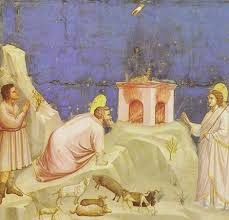Anyone who knew me at school may remember that I didn't really like Physics but studied it and passed final exams in it and there I stopped, thinking I had left it behind forever! Then TOEFL came along and those dreaded science reading and listening questions!
So, after trying a few practice questions for the AP Physics exam which I found online and realising I had not forgotton everything, I decided to post this pretty easy listening! If I can do it, so can you!
The video is introduced by a guy then changes to an American woman:
1 What are two of the most important applications of the relationship between electricity and magnetism?
2 What sort of energy does the electric generator convert into electrical energy?
3 Name the five parts of the motor described.
4 How does the commutator move?
5 What happens when current is passed through the circuit?
6 The electrical motor converts electrical c....................... into mechanical f.................
7 What two things were changed to convert the electrical motor into an electrical generator?
8 Did you notice these two idioms: "Like two sides of a coin" and "on the other hand"? Can you explain them?
This is easy to listen to but you do have to concentrate to understand the technical details which is so typical of TOEFL listening exercises.
Scroll down for answers below:
What are two of the most important applications of the relationship between electricity and magnetism?
The electric motor and the electric generator.
What sort of energy does the electric generator convert into electrical energy?
Mechanical energy is converted into electrical energy using electro-magnetic induction.
Name the five parts of the motor described.
Battery, commutator, brushes, copper wire loop, permanent magnet
How does the commutator move?
It rotates freely rubbing against the brushes.
What happens when current is passed through the circuit?
It creates a magnetic field around the wire which interacts with the field of the permanent magnet to create a rotation of the loop.
The electrical motor converts electrical current into mechanical force.
What two things were changed to convert the electrical motor into an electrical generator?
A windmill rotor was attached to the copper wire loop and a bulb replaced the battery.
Did you notice these two idioms: "Like two sides of a coin" and "on the other hand"?
Can you explain them?
"Like two sides of the same coin" means two different ideas that are closely related. For example, reward and punishment are two different ways of controlling people.
"On the other hand" is used to introduce an alternative explanation of something that has just been explained.



